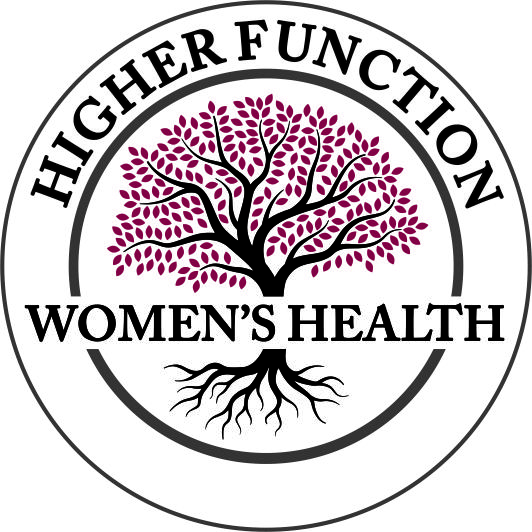Seasons Of Change
Much as we can’t stop the changing of seasons, nor can we stop the body from changing, especially a woman’s body. There are two major times in a woman’s life where drastic changes can happen in her body; after a baby and/or during menopause.
My darling little man has definitely left me with some changes in my body, specifically his “exit scar.” I ended up having a c-section as there was a triad of issues that our obstetrician thought would limit me from having a vaginal delivery. Thankfully, I knew some of the exercises and techniques to start early to help with my rehab, and still I had some unpleasant issues associated with the scar and breastfeeding.
Other side effects we may see after having a baby can include: the “mom posture” from carrying and breastfeeding; abdominals that aren’t quite the same; stretch marks; breasts that sit a little lower; and things down below may feel a little “different”! Of course every body is different but, these are common changes we see.
With menopause there can be mood changes, hot flashes, skin changes, and weight gain just to name a few issues.
(Wow, men do have the better end of the stick!!!!)
These life events can create major impact on a woman’s body and although years can separate these two transitions, there are some similarities that exist between them, specifically the hormonal changes.
For women who breastfeed, the hormone prolactin is released for milk production. This hormone then causes a decrease in estrogen production. During perimenopause there is also a decrease in estrogen. However, it is due to the ovaries releasing fewer hormones, specifically FSH (follicle stimulating hormone) and LH (luteinizing hormone), which influence the regulation of estrogen, progesterone, and testosterone. Eventually, there is a decline in estrogen which leads to cessation of periods and then menopause begins once it has been a full year without a period.
In both scenarios it is the decrease in the sex hormones that can cause havoc on the vaginal and urinary tissues. Specifically, there can be epithelial thinning, decreased elasticity, fewer blood vessels and therefore, diminished blood flow. All of which make the tissue more vulnerable to irritation and breakdown. There can also be changes in the pH, changes in the vaginal flora and diminished lubrication. When women experience vaginal symptoms due to these hormonal changes it can be referred to as Atrophic Vaginitis, and during menopause they have defined it as the Genitrourinary Syndrome of Menopause.
Typical signs and symptoms due to these changes may be vaginal dryness, itching, burning, irritation, and dyspareunia (pain with intercourse). It may also cause urinary symptoms such as dysuria (painful or difficult urination), urgency, and frequency. Sounds pleasant, doesn’t it???? But fret not, there are solutions to help!!!
One of the most common solutions for both new moms and menopausal women would be a prescription of low dose, local hormone replacement therapy (HRT). The mention of this can definitely raise some concern given the dated information on increased risk of cancer, but the newer research is indicating that the risk is actually very low. Because it is applied via suppository, it is locally absorbed by the vaginal tissue and the systemic affect is low. However, if you do have a history of cancer you may want to weigh the risks vs benefits before starting and regardless, have a discussion with your family doctor, nurse practitioner or naturopathic doctor, all of whom can prescribe this for you.
If HRT isn’t for you, then there is also non-hormonal vaginal moisturizers which can help improve the moisture of the vagina, but won’t necessarily improve the cellular quality of the tissue. Some of the brands that I personally recommend are: Replens, Mae, Repa-Gyne, and Gynatrof.
For pain with intercourse in the post-partum phase, as well as during menopause, using lubrication is key!!! And if there is scar tissue from birthing, doing some scar massage to the perineum can help improve the tissue quality as well.
For the bladder symptoms such as incontinence, urgency and frequency, it is important to have a thorough exam, such as one performed by a Pelvic Health Physiotherapist, to assess if there is underlying pelvic floor weakening or behavioural triggers playing a role with the urge and frequency.
Finally, there is the option of vaginal laser therapy for those with Genitrourinary Syndrome of Menopause. It is a relatively new form of therapy, but has shown some positive results for improving the vaginal tissue quality. It does so by creating micro-ablations to the tissue which then stimulates blood flow and cellular reproduction. It needs to be administered by a gynaecologist and is not covered by insurance at this time. It is an avenue to be explored if you have tried the other options and still struggling with symptoms.
So as I started off saying, change is inevitable, but I hope that I have been able to provide a better understanding of what’s causing some of those unpleasant changes and have shed some light on different solutions. Change doesn’t have to be a bad thing, it just takes a little effort to get through it!
Sincerely,
Laura
Physiotherapist & Owner
